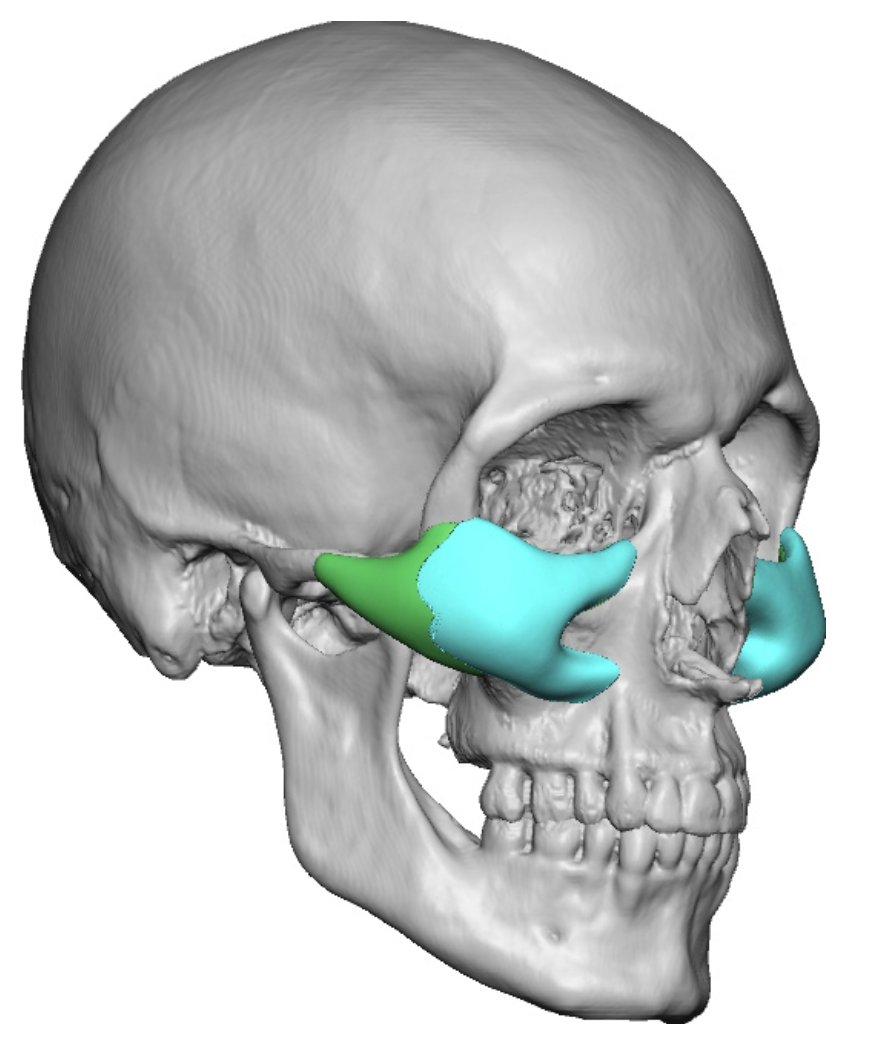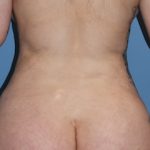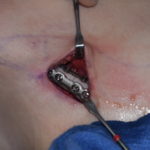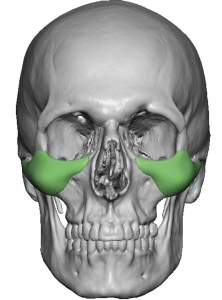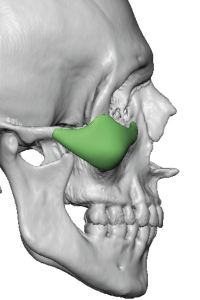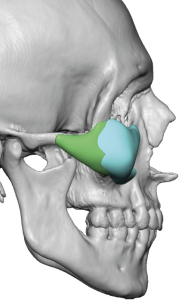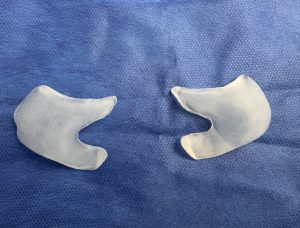Background: The custom infraorbital-malar implant is the most commonly used custom facial implant design in the midface. Because of its unique infraorbital and malar composite design a horizontal augmentation is achieved from the inside of the eye out well onto the zygomatic arch. This is effective because many patients with infraorbital deficiencies also have cheek deficiencies due to the inward rotation by development of the zygomatico-maxillary complex. As a result this type of midface implant can successfully treated undereye hollows as well as achieve a high cheek augmentation look.
The custom IOM implant works well in those patients who have a normal maxillary projection or have had a prior LeFort I maxillary advancement in which the bone above it has been left behind. But in the patient with a more complete horizontal mid face deficiency the custom IOM implant is only going to provide a partial correction of the lack of midface projection. In fact, it may make the lower maxillary deficiency around the nasal base more obvious.
The method to achieve a more complete midface effect after a primary IOM implant is to employ an overlay implant. With this technique the lower midface effect can be completed and/or the primary IOM implant effect increased by making a new implant design that fits over the first implant design. This is only possible with silicone material because of the lack of adherence of the implant to the capsule. This allows the new implant to slide into the existing capsule up over and onto the indwelling implant. Because of the smooth surfaces of the two implants screw fixation is needed tom secure the new implant’s position.
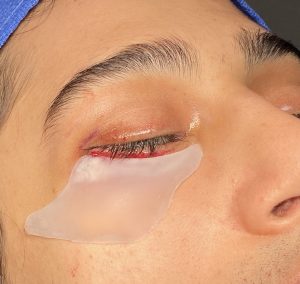
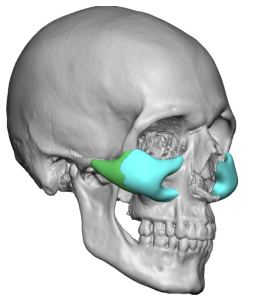
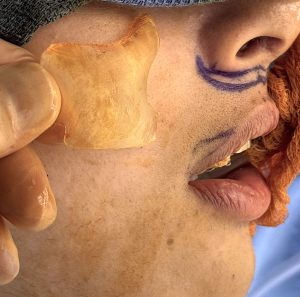
In custom implant designing any implant shape can be made whether it sits on bone or another implant. It can be difficult to predict before what the exact effects of an implant will do…or maybe even fully know how much augmentation one really wants or needs. Once this is realized the choice is to either make a whole new larger implant or add on to what is already there. In most cases a whole new implant is usually the preferred approach. But if the size of the new implant exceeds the ability to place it through the incision, and the implant will need to be cut into pieces to do so, then the overlay concept has merit.With a final implant footprint size as in this case a segmentalized implant design would have been needed anyway.
Key Points
1) The custom infraorbital-malar (IOM) implant augments the upper half of the mid face but not the lower half of the mid face.
2) For a complete midface augmentation effect in patients with a primary IOM implant, a secondary infraorbital-malar-maxillary (IMM) implant overlay can be applied.
3) While the custom IOM implant is placed through the lower eyelid approach the custom IMM overlay implant is placed intraorally.
Dr. Barry Eppley
World-Renowned Plastic Surgeon

